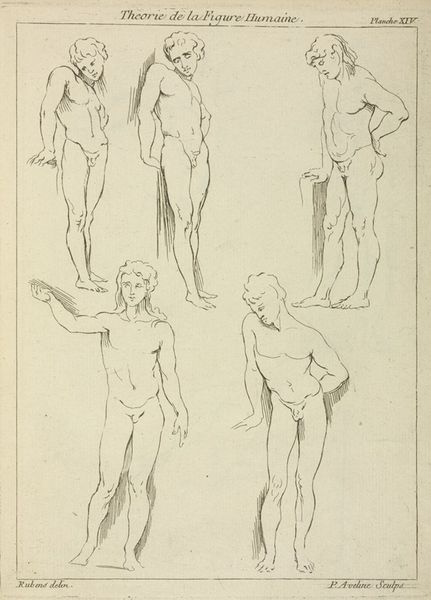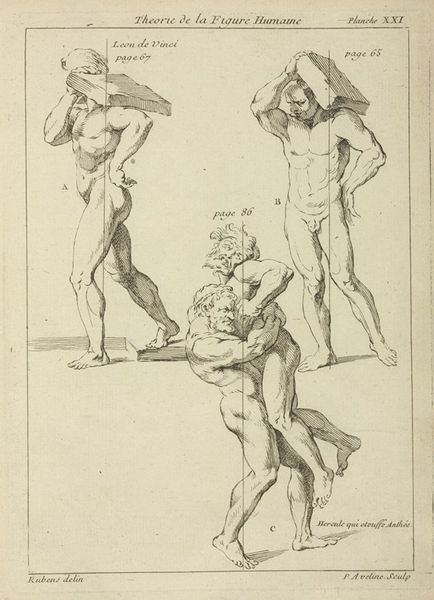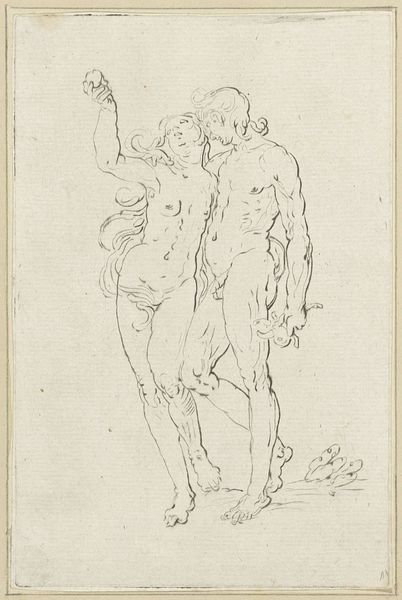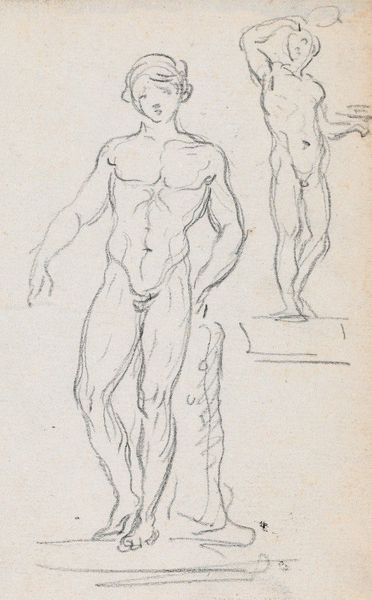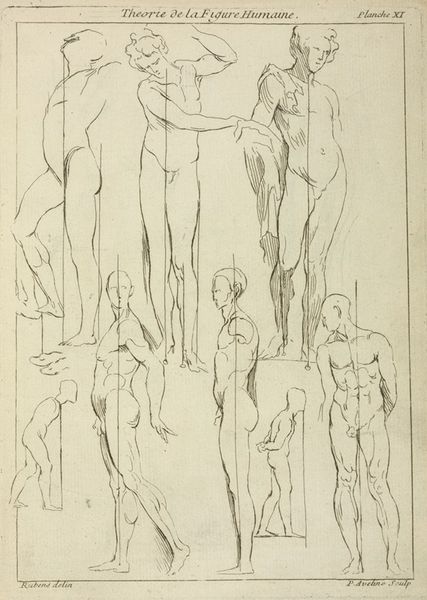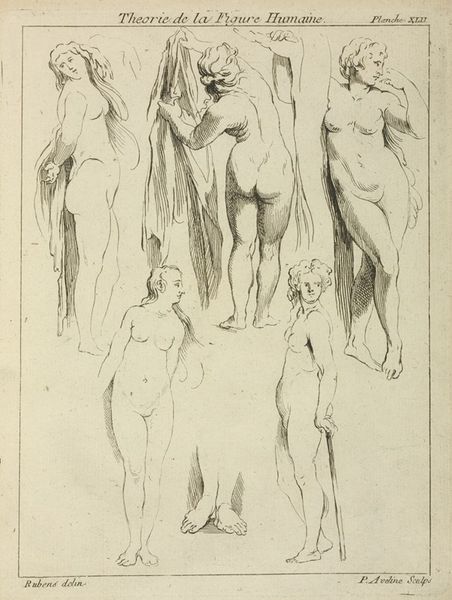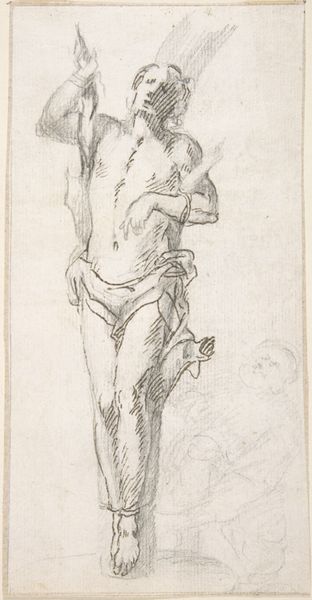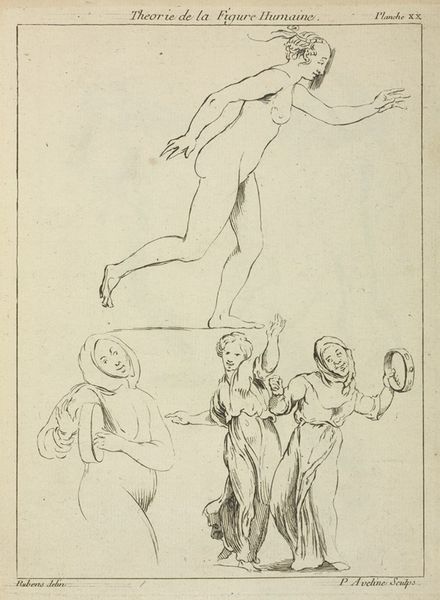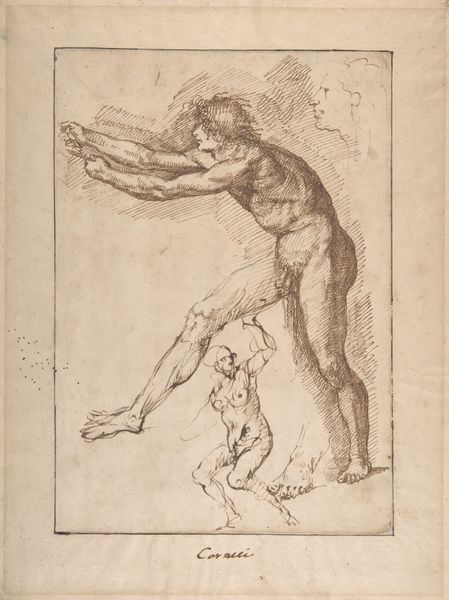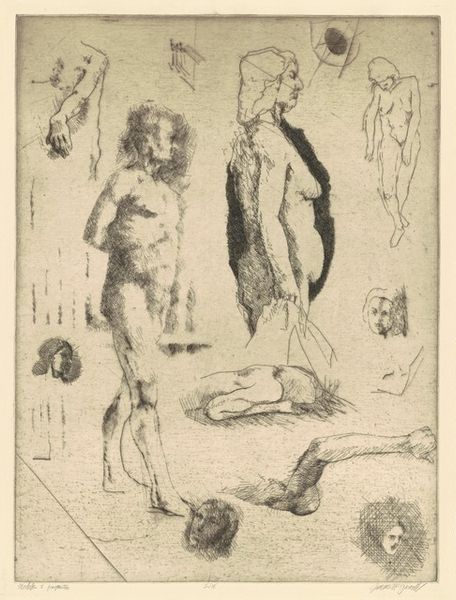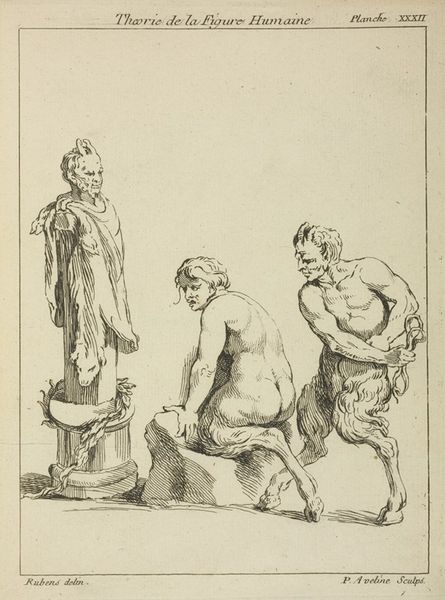
#
amateur sketch
#
light pencil work
#
pencil sketch
#
personal sketchbook
#
idea generation sketch
#
sketchwork
#
ink drawing experimentation
#
sketchbook drawing
#
storyboard and sketchbook work
#
initial sketch
Copyright: Public Domain: Artvee
Curator: Here we have a work attributed to Peter Paul Rubens titled "Three standing figures, seen from side and front." It appears to be a preparatory sketch executed in pencil. Editor: My immediate reaction is one of stark anatomical study. The lines are economic, but reveal a considered knowledge of musculature, if not a graceful final rendering. The vertical axes, especially, convey a very dry and intellectual examination. Curator: Precisely. Notice the use of simple contour lines to define form and volume. The parallel hatching, though minimal, is strategically placed to suggest depth and shadow. There is a deliberate focus on proportion and skeletal structure beneath the skin. The visual planes, and how they intersect and recede, are handled with deft precision. Editor: It almost has an uncanny quality, stripping down the romanticism one often associates with Rubens and his figures, leaving a rawness that emphasizes a pursuit of ideal male beauty derived from a deeper Classical ideal. It reminds me that Ruben’s workshop churned out more than religious paintings. This sketch likely references centuries-old classical statuary which often embody a cultural ideal that perseveres to this day. Curator: The semiotic load is certainly there in those historical lineages, however, the intrinsic properties tell their own story: see how each of these figures takes up approximately one-third of the total compositional space and the relationship between the individual forms themselves creates a holistic tension which animates the sheet. Editor: And, considering it's likely from a personal sketchbook, we can imagine the dynamism that went into Rubens using this as an aid, like many of his similar studies, when crafting major works in his paintings. Curator: A compelling thought—seeing Rubens thinking through form—especially from our 21st-century vantage. Editor: Indeed, viewing such direct evidence of art history—and the human figure at the basis of so much of art historical visual vocabulary—allows an incredibly vivid window onto Rubens' thinking process.
Comments
No comments
Be the first to comment and join the conversation on the ultimate creative platform.
